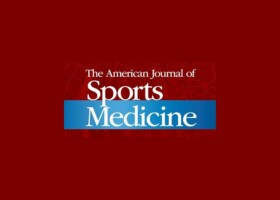
Authors:
Dey Hazra RO, Dey Hazra ME, Hanson JA, Doan KC, Rutledge C, Horan MP, Dornan GJ, Millett PJ
Abstract:
Background:
The prevalence of partial-thickness rotator cuff tears (PTRCTs) has been reported to be 13% to 40% within the adult population, accounting for 70% of all rotator cuff tears. Approximately 29% of PTRCTs will progress to full-thickness tears if left untreated. The long-term clinical course after arthroscopic repair of PTRCTs is not well known.
Purpose:
To investigate minimum 10-year patient-reported outcomes (PROs) after arthroscopic rotator cuff repair (RCR) of the supraspinatus tendon and to report reoperation and complication rates.
Study design:
Case series; Level of evidence, 4.
Methods:
Patients were included who underwent arthroscopic RCR of a PTRCT performed by a single surgeon between October 2005 and October 2011. Arthroscopic RCR was performed with a transtendon repair of partial, articular-sided supraspinatus tendon avulsions, bursal-sided repair, or conversion into a full-thickness tear and repair. PRO data were collected preoperatively and at a minimum 10 years postoperatively. PRO measures included the American Shoulder and Elbow Surgeons score, Single Assessment Numeric Evaluation score, the shortened version of Disabilities of the Arm, Shoulder and Hand score (QuickDASH), the 12-Item Short Form Health Survey Physical Component Summary, and patient satisfaction. Subanalyses were performed to determine if tear location or age was associated with outcomes. Retears, revision surgery, and surgical complications were recorded.
Results:
In total, 33 patients (21 men, 12 women) at a mean age of 50 years (range, 23-68) met criteria for inclusion. Follow-up was obtained in 28 (87.5%) of the 32 eligible patients ≥10 years out from surgery (mean, 12 years; range, 10-15 years). Of the 33 PTCRTs, 21 were articular sided and 12 were bursal sided. Of the 33 patients, 26 underwent concomitant biceps tenodesis. At follow-up, the mean PROs were significantly improved when compared with preoperative levels: American Shoulder and Elbow Surgeons score from 67.3 to 93.7 (P < .001), Single Assessment Numeric Evaluation from 70.9 to 91.2 (P = .004), QuickDASH from 22.3 to 6.6 (P < .004), and 12-Item Short Form Health Survey Physical Component Summary from 44.8 to 54.2 (P < .001). Median postoperative satisfaction was 10 (range, 5-10). No patient underwent revision surgery.
Conclusion:
Arthroscopic repair of PTRCTs results in excellent clinical outcomes and high patient satisfaction at minimum 10-year follow-up. Furthermore, the procedure is highly durable, with a clinical survivorship rate of 100% at 10 years.
You may request the complete study: Minimum 10-year outcomes of partial rotator cuff repairs – Failure rates and clinical significance
